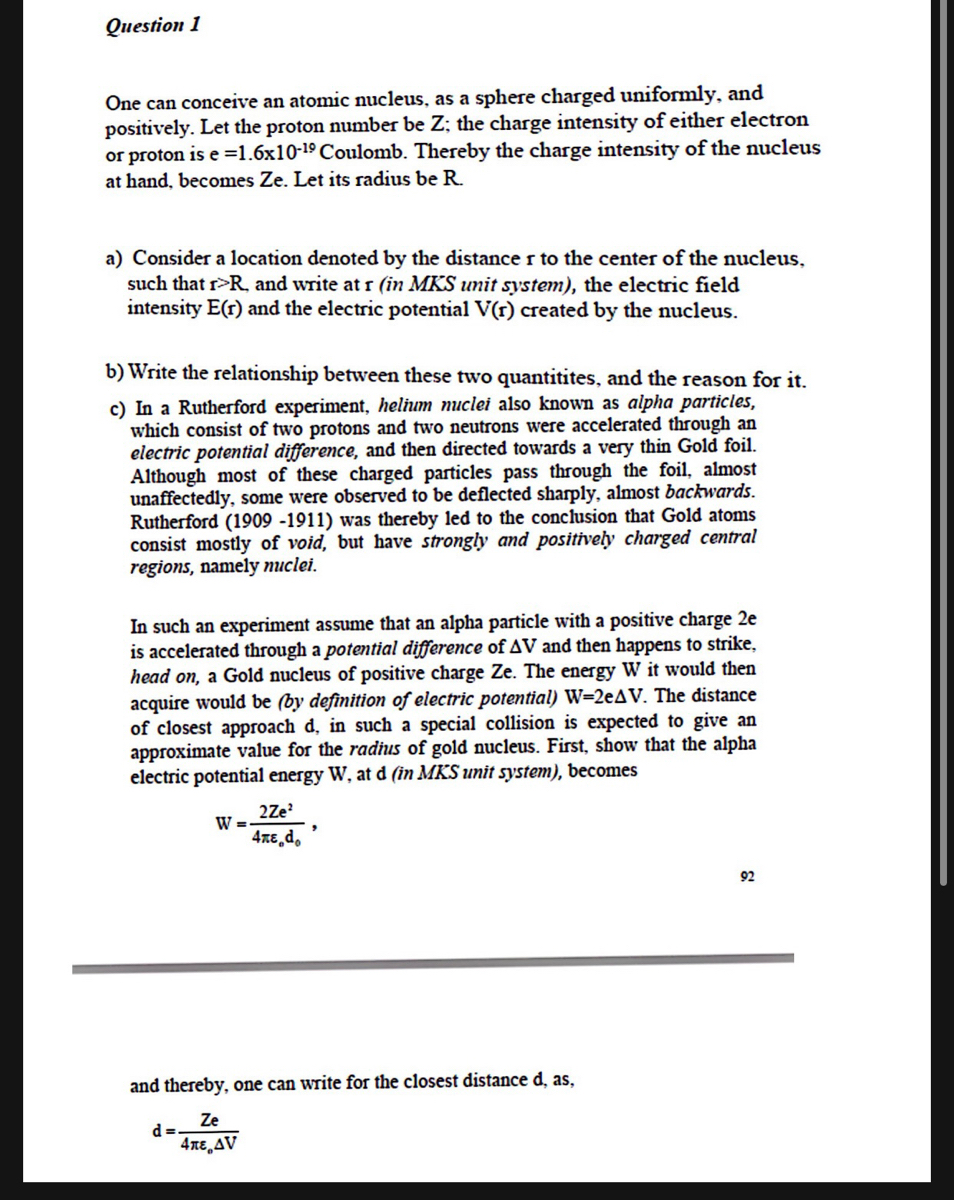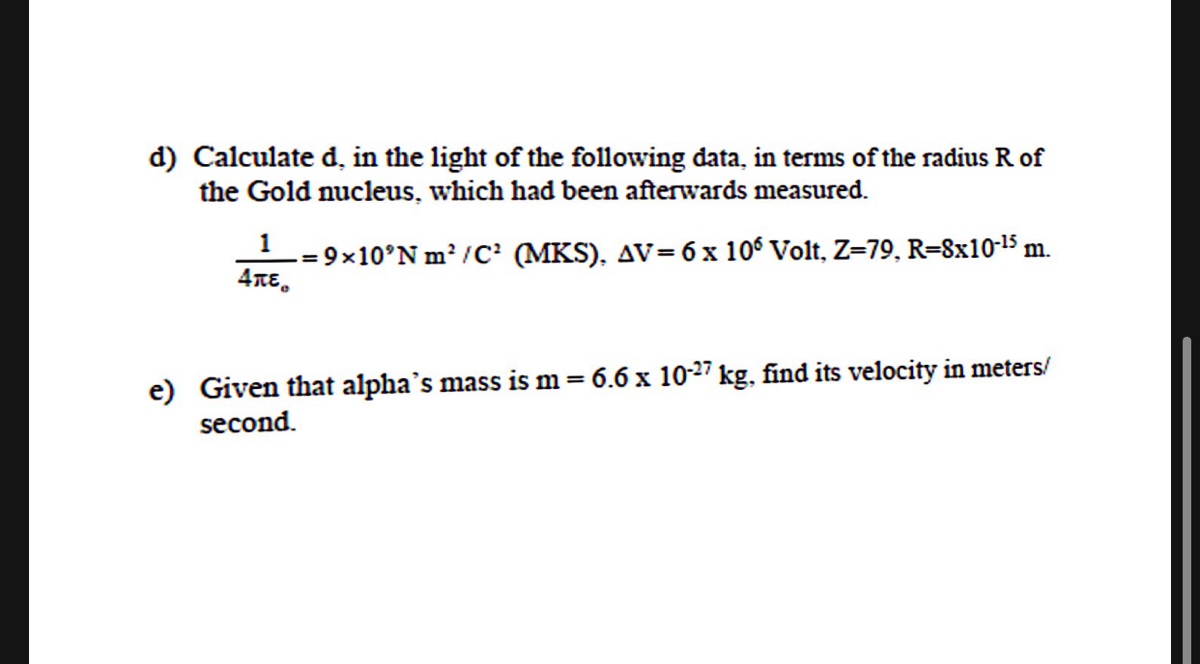This is one question with different parts

Extracted text: Question 1 One can conceive an atomic nucleus, as a sphere charged uniformly, and positively. Let the proton number be Z; the charge intensity of either electron or proton is e =1.6x10-19 Coulomb. Thereby the charge intensity of the nucleus at hand, becomes Ze. Let its radius be R. a) Consider a location denoted by the distance r to the center of the nucleus, such that r>R, and write at r (in MKS unit system), the electric field intensity E(r) and the electric potential V(r) created by the nucleus. b) Write the relationship between these two quantitites, and the reason for it. c) In a Rutherford experiment, helium nuclei also known as alpha particles, which consist of two protons and two neutrons were accelerated through an electric potential difference, and then directed towards a very thin Gold foil. Although most of these charged particles pass through the foil, almost unaffectedly, some were observed to be deflected sharply, almost backwards. Rutherford (1909 -1911) was thereby led to the conclusion that Gold atoms consist mostly of void, but have strongly and positively charged central regions, namely nuclei. In such an experiment assume that an alpha particle with a positive charge 2e is accelerated through a potential difference of AV and then happens to strike, head on, a Gold nucleus of positive charge Ze. The energy W it would then acquire would be (by definition of electric potential) W=2eAV. The distance of closest approach d, in such a special collision is expected to give an approximate value for the radius of gold nucleus. First, show that the alpha electric potential energy W, at d (in MKS unit system), becomes 2Ze W = 4xe,d, 92 and thereby, one can write for the closest distance d, as, Ze d = 4nE AV

Extracted text: d) Calculate d, in the light of the following data, in terms of the radius R of the Gold nucleus, which had been afterwards measured. L= 9×10°N m/C' (MKS), AV= 6 x 106 Volt, Z=79, R=8x10-15 m. 4TE. e) Given that alpha's mass is m= 6.6 x 10-27 kg, find its velocity in meters/ second.